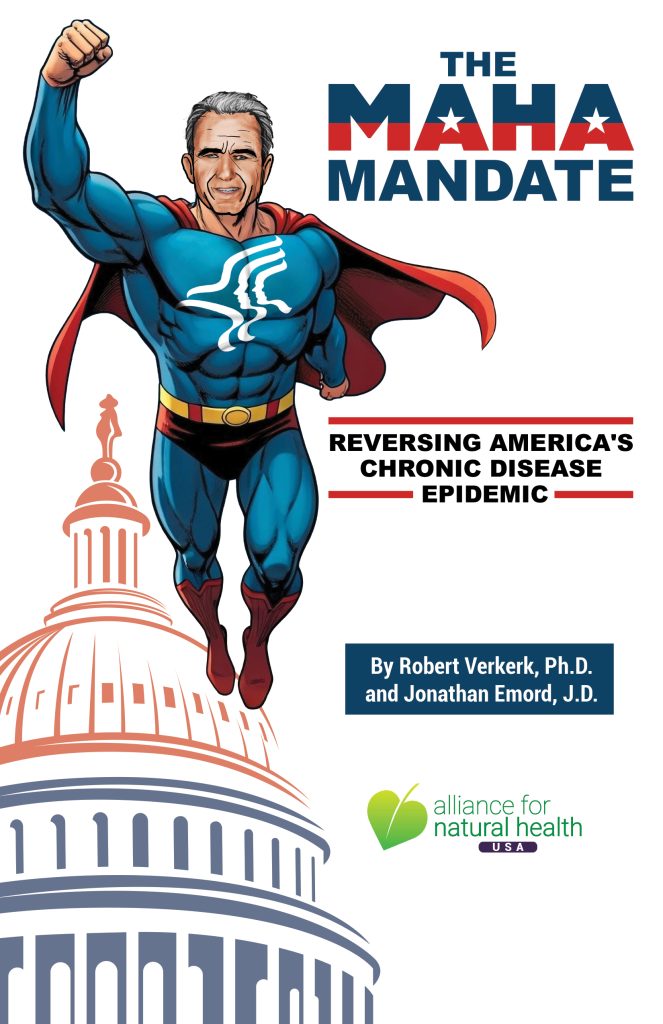Despite the FDA’s updated ‘healthy’ food label criteria, outdated science and corporate influence continue to undermine genuine dietary reform and public health.
THE TOPLINE
- The FDA revised its criteria for labeling foods as “healthy,” emphasizing whole foods while limiting added sugar, saturated fat, and sodium. However, it still relies on outdated science, such as unnecessarily demonizing saturated fats, which mounting evidence suggests should not be regarded as intrinsically harmful with specific saturated fats having been shown to be beneficial.
- The revised definition reflects persistent corporate influence in dietary policy. While stricter on sugar, it still allows added sugar in “healthy” foods and excludes some nutrient-dense options like grass-fed beef due to arbitrary limits, prioritizing industry profits over public health.
- ANH advocates for holistic health guidance free from corporate interests, eliminating added sugars in “healthy” foods, and embracing updated science. This aligns with RFK Jr.’s nomination for Secretary of Health, which could push for a systemic overhaul.
The U.S. Food and Drug Administration (FDA) recently revised its definition of what constitutes a “healthy” food, ostensibly to guide consumers toward better dietary choices. The updated criteria emphasize whole foods—those minimally processed and rich in naturally occurring nutrients—and impose stricter limits on added sugar, saturated fat, and sodium. As has been the case with the Dietary Guidelines, the FDA’s “healthy” definition relies on the same outdated science and troubling industry influence that has long marred federal dietary policy.
Outdated Science on Saturated Fat
One of the FDA’s focal points in its new rule is limiting saturated fat to less than 10% of daily calories, echoing the Dietary Guidelines for Americans. This guidance is rooted in the debunked theory that saturated fat is a primary driver of heart disease. Yet mounting evidence tells a different story: saturated fat is not only neutral in its effects on heart health but also delivers a host of benefits that we discussed in recent coverage.
Foods like salmon may qualify as “healthy” under the new rules, but the blanket restriction on saturated fat means nutrient-dense options such as grass-fed beef or certain dairy products could still be unfairly penalized. Americans deserve dietary recommendations grounded in up-to-date science, not relics of an era shaped by flawed research and corporate lobbying.
FDA’s Sugar High
The FDA’s updated definition takes a stricter stance on added sugars, limiting their presence in products labeled “healthy” to 5-10% of the daily value depending on the food category. While this is a small improvement, it begs the question: why allow any added sugar at all in foods marketed as “healthy”? If big food decides to capitalize on the FDA’s new criteria and reformulates its ultra-processed products with added sugars at the top end of this range (10%), while still including a battery of naturally-occurring sugars, would a diet based on those foods really be healthy? Of course not!

Numerous studies have shown that sugar is a leading contributor to chronic conditions such as obesity, diabetes, and heart disease. Also, the body actually doesn’t know if sugar is added or naturally-occurring. Highly refined grain-based foods that cause major blood spikes, as well as dairy products, both with added sugars at 10% of their caloric value, can still bear the “healthy” label under these new rules, misleading consumers into thinking these choices are beneficial.
The FDA’s allowance for added sugar—even at reduced levels—prioritizes industry interests over public health. It will also further incentivize big food to include low fat dairy and other foods that have been major contributors to the metabolic disease crisis because fats have over double the caloric value of carbohydrates and proteins.
Another problem is that the FDA makes no distinction about the type of sugar. Pure sugars or high fructose corn syrup will be regarded in exactly the same way as raw cane sugar. Yet these sugars behave very differently in the body, with raw cane sugar having been established as a much healthier option than pure fructose or high fructose corn syrup.
Cronyism in Dietary Policy
To fully understand the shortcomings of the FDA’s revised definition, we must examine the pervasive cronyism in federal nutrition policy. The development of dietary guidelines has long been influenced by major food industry players, who invest millions to sway public policy in their favor.
The 1991 USDA Food Pyramid debacle offers a telling example: its release was delayed due to objections from meat and dairy lobbies, and the final version appeased industry concerns. Fast forward to today, and little has changed.
When government agencies tasked with protecting public health succumb to the influence of big food, it’s the public that suffers. The FDA’s new “healthy” label rules continue to reflect the undue sway of corporate interests over science.
A Call for True Holistic Health Guidance
At the ANH, we believe vibrant health starts with empowering individuals to make informed choices about their well-being. This includes embracing holistic health solutions, proper diet, and nutritional supplements—all free from the influence of corporate interests. It’s time for the FDA to prioritize real science and public health over outdated paradigms and industry profit margins.
True dietary guidance would reject the demonization of nutrient-dense saturated fats and eliminate added sugars entirely from products marketed as “healthy.” More importantly, it would address the systemic cronyism that undermines trust in federal agencies like the FDA. This is the promise represented by Robert F. Kennedy Jr.’s nomination to be US Secretary of Health, and another reason we need to support his nomination to he gets confirmed.
In the coming year, ANH will be pursuing massive reforms of our health and food systems. You can support our work by getting a copy of our new e-book to learn more about ANH’s vision to transform healthcare!






We are currently one of the sickest nations in the world, with obesity and diabetes is even at high percentages of children! We need to make America healthy again and therefore need Robert F. Kennedy as the head of the Health Department.
Thank you for letting me send a message to my elected officials through this website.
We should be taught to STAY healthy – God gave us an immune system and the raw materials (think herbs) to sustain it.
We need to be taught about both and be able to access healthier substances. Encourage organic gardening and farming.
I chuckle when I read fda BS, I know my body, the fda is useless for me as I do not trust the fda at all.
I support Robert F. Kennedy Jr.’s nomination to be US Secretary of Health! We desperately need to kick out corporate influence over the food we eat!!! I don’t want to buy an organic mandarin and find out it’s covered in bug larvae which makes it no longer a fruit or vegetarian! And the chemicals and poisonous additives, Please Remove Those too!
Thank you RFK jr!
FDA should exclude from “healthy” food label all added sugar, especially high fructose corn syrup and added fructose, and other pure sugars, except small amounts of only raw cane sugar. All synthetic or lab-made ingredients must be excluded. All products with glysophate or other pesticides, herbicides; heavy metals; synthetic or lab-made dyes; MSG; any chemicals; titanium; omega-6 fats and long chain fats; any genetically modified substances; any genetically engineered substances; any lab-made ingredients; any food with mRNA, growth hormones that make people obese, antibiotics that make people obese, or any other “vaccines” must be identified on the label; mRNA enzymes, mRNA “rennent,” microbial rennent, and more must be excluded from “healthy” food label. Low fat dairy should not be identified as “healthy.” Highly refined grain that causes blood sugar spikes can not be labelled “healthy” while contributing towards high blood sugar. Dairy with added sugar (which usually happens with low fat dairy) must not be labeled “healthy.”
Healthy labels require whole foods that are nutrient-dense, grassfed and/or organic that do not use glysophate or related toxins in the food growing processes or feed and start with heirloom seeds, not genetically engineered seeds.
We must arrest those individuals funding, ordering, and spraying geo-chemical engineering in our skies with heavy metals, nano particles, microbes, parasites, and other harmful substances that decrease the nutrient quality of food crops and water resources upon which these toxins land and cause degradation of their quality as well as poisoning the air quality being breathed by people who are poisoned in this way and become sick, disabled, and/or die from it. We must charge them with intentional murder in the same way those poisoning others with arsenic poisoning and other harmful substances have been charged for adding these chemicals to the drinks, food, or medications of people in their care or in their world of contacts for centuries.
After working within the Natural Health Complementary Medicine space for over 2 decades. Dealing with blockage from all areas. This is a breath of fresh air.